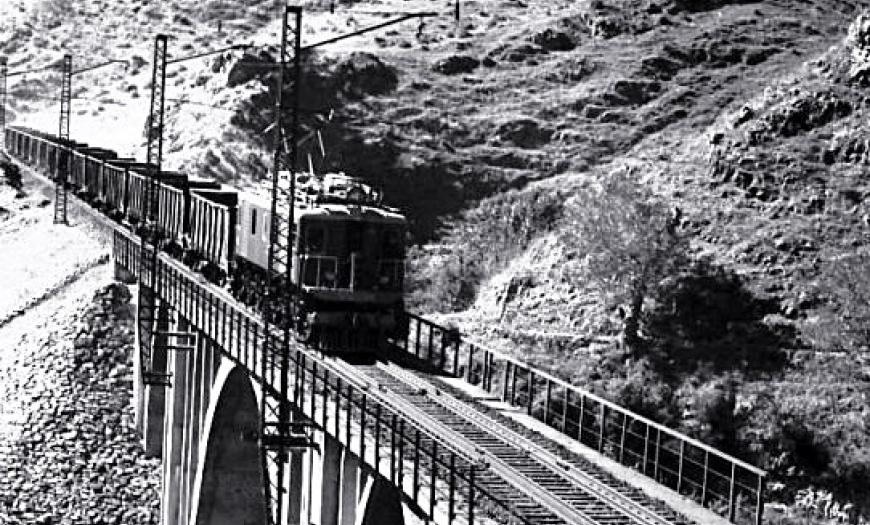Shortly before the beginning of the Great Patriotic War, Lenzheldorproekt (in 1955 became part of Lengiprotrans) began designing the Kirovabad (now Ganja) - Dashkesan railway line on the territory of the Azerbaijan SSR. The road was supposed to connect the Dashkesan deposit with the Transcaucasian railway for the export of iron ore to the metallurgical plant under construction in Rustavi (near Tbilisi).
The route mainly followed the valley of the Kashkara-Chay river. By the nature of the relief, the territory of the region is divided into 2 parts: low-lying - from the gentle slopes of the Kura River valley to the foot of the mountains (0-16 km), and mountain, located in the spurs of the Lesser Caucasus mountains in the gorge of the Kashkara-Chai River (16-50 km) ... The entire area is seismically unstable, the intensity of the earthquake in the mountainous part is determined at 7 points.
The highly intersected relief and steep slope of the Kashkara-Chai river gorge made it possible to build the line only with the use of electric traction, a 37% steering slope and a radius of curves of 200 m. Under such technical conditions, the line could be designed only by providing for three tunnels, a number of viaducts, retaining walls and other complex engineering structures. The volume of earthworks (mainly rocky) was characterized by a figure of about 50 thousand. m3 per kilometer, and in some areas it exceeded 100 thous. m3 per kilometer of route.
Such complex construction work forced prospectors and designers to look for a more rational solution. In the course of a detailed study of the issue and a survey of the area, carried out in parallel with the main work in accordance with the assignment, an option was developed to replace the most difficult mountainous section of the railway with a cable car. This proposal was considered and adopted in Moscow. As a result, 35 km of the railway was built, and a cable car was built along the rest of the length.
Surveys along the route were carried out by the Dashkesan expedition from May to August 1941 and were interrupted with the outbreak of the war. Work on the site was resumed in 1944 by the decision of the Government of the USSR. The construction of the road was completed in the post-war years.
Project Status:


